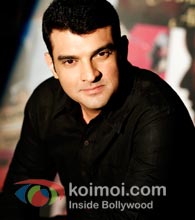Siddharth Roy Kapur, CEO of UTV Motion Pictures, on the factors that have come together to help new talent and new styles in the last few years:

In the last decade, the Hindi film industry has seen an unprecedented array of new directors, composers, lyricists, writers and actors enter the industry. As is always the case, water finds its own level, and those with that special mix of talent, perseverance and luck have managed to carve a niche for themselves. The question often posed to us as a studio is about how we manage to maintain a balance between bringing audiences big ticket commercial cinema and at the same time, introducing new talent every year. The answer is actually rooted within the definition of how we see ourselves.
Production Or Distribution – What Came First?
UTV is one of those studios that is also a production house, or a production house that is also a studio. We are in distribution BECAUSE we are in production, and not the other way around. As a consequence, we have the inclination and the ability to be creatively involved in a significant proportion of our slate of releases, while at the same time being able to determine the scale and marketing of these releases worldwide. This gives us the ability to plan our production slate well in advance, and ensure a balance between different genres, scales and budgets in the cinema we support.
Commercial Blockbusters & Genre-Breakers

While we bring audiences big ticket commercial blockbusters like Rang De Basanti, Jodhaa Akbar and Raajneeti, we also bring them genre-breakers like Dev D, A Wednesday! and Udaan. Since our inception less than a decade ago, we have helped introduce some incredibly talented new directors to the industry, amongst whom are Dibakar Banerjee (Khosla Ka Ghosla!, Oye Lucky! Lucky Oye!), Rajkumar Gupta (Aamir, No One Killed Jessica), Neeraj Pandey (A Wednesday!), Nishikant Kamat (Mumbai Meri Jaan), Paresh Mokashi (Harishchandrachi Factory; Marathi), Vikramaditya Motwane (Udaan), Anusha Rizvi (Peepli Live), Abhinay Deo (Delhi Belly, which was the first film he signed but not his first film to hit the screens), and many more. In fact, Aamir was one of those unique films in which pretty much everyone made debut – the director (Rajkumar Gupta), the lead actor (Rajeev Khandelwal), the composer (Amit Trivedi), the lyricist (Amitabh Bhattacharya) and the DOP (Alphonse Roy)!
Has this happened by chance? We believe not. It has happened because of a concerted effort to back new talent and new styles of storytelling. What are the other factors that have come together to help this cause in the last few years?
1. The increased proportion of revenue coming from multiplex audiences has aided the ability to back cinema that might cater to a smaller section of the audience, but can still aim to recover its investment because of the higher value per ticket sold, and the increased revenue from non-theatrical rights.
2. The exposure of our audiences to all genres and styles of content 24 X 7 on television and now even more all pervasively on the Web, has opened them up to experiencing the same from their own cinema.
3. A new breed of filmmakers who no longer believe in making a distinction between “art” and “commercial” cinema. They are open to telling new stories and experimenting with new genres in an ENTERTAINING manner… the key to making it interesting for audiences to try new fare!
It is very encouraging to see so many studios today supporting and encouraging new talent, and I am sure this heralds a very exciting time in our cinema. A time in which all sorts of cinema can co-exist and achieve commercial and creative success.



 Follow Us
Follow Us







